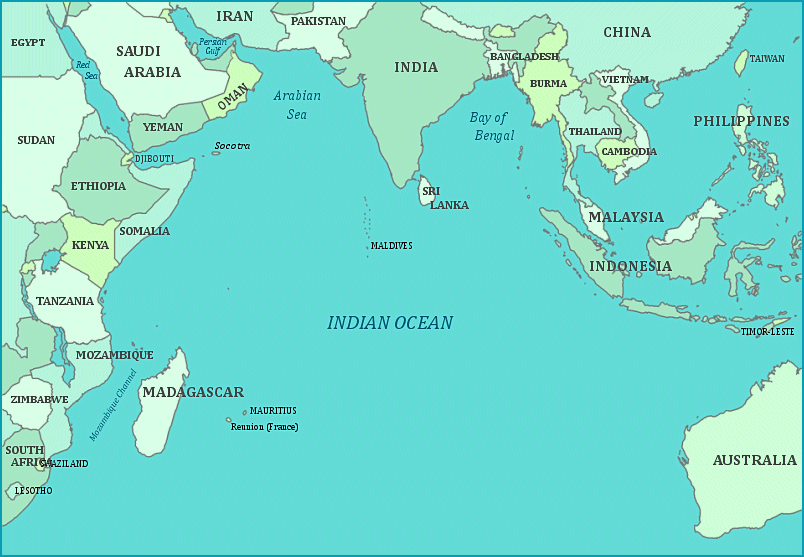PERTH, Australia – The desperate, multinational hunt for Flight 370 resumed Wednesday across a remote stretch of the Indian Ocean after fierce winds and high waves that had forced a daylong halt eased considerably.
A total of 12 planes and five ships from the United States, China, Japan, South Korea, Australia and New Zealand were participating in the search, hoping to find even a single piece of the Malaysia Airlines jet that could offer tangible evidence of a crash.
Malaysia announced earlier this week that a mathematical analysis of the final known satellite signals from the plane showed that it had crashed in the sea, taking the lives of all 239 people on board.
The new data greatly reduced the search zone, but it remains huge – an area estimated at 1.6 million square kilometres (622,000 square miles), about the size of Alaska.
“We’re throwing everything we have at this search,” Australian Prime Minister Tony Abbott told Nine Network television on Wednesday.
“This is about the most inaccessible spot imaginable. It’s thousands of kilometres from anywhere,” he later told Seven Network television. He vowed that “we will do what we can to solve this riddle.”
In Beijing, some families held out a glimmer of hope their loved ones might somehow have survived. About two-thirds of the missing were Chinese, and their relatives have lashed out at Malaysia for essentially declaring their family members dead without any physical evidence of the plane’s remains. Many also believe that the Malaysian officials have not been transparent or swift in communicating information with them about the status of the search.
Wang Chunjiang, whose brother was on the plane, said he felt “very conflicted.”
“We want to know the truth, but we are afraid the debris of the plane should be found,” he said while waiting at a hotel near the Beijing airport for a meeting with Malaysian officials. “If they find debris, then our last hope would be dashed. We will not have even the slightest hope.”
China, which now has Chinese warships and an icebreaker in the search zone, has been intent on supporting the interests of the Chinese relatives of passengers, backing their demands for detailed information on how Malaysia concluded the jet went down in the southern Indian Ocean.
That also is the likely reason why Chinese authorities – normally extremely wary of any spontaneous demonstrations that could undermine social stability – permitted a rare protest Tuesday outside the Malaysian embassy in Beijing, during which relatives chanted slogans, threw water bottles and briefly tussled with police who kept them separated from a swarm of journalists.
China dispatched a special envoy to Kuala Lumpur, Vice Foreign Minister Zhang Yesui, who met Malaysian Prime Minister Najib Razak and other top officials Wednesday, the official Xinhua News Agency reported.
The plane’s bizarre disappearance March 8 shortly after it took off from Kuala Lumpur en route to Beijing has proven to be one of the biggest mysteries in aviation.
Investigators have ruled out nothing so far – including mechanical or electrical failure, hijacking, sabotage, terrorism or issues related to the mental health of the pilots or someone else on board.
The search for the wreckage and the plane’s flight data and cockpit voice recorders will be a major challenge. It took two years to find the black box from an Air France jet that went down in the Atlantic Ocean on a flight from Rio de Janeiro to Paris in 2009, and searchers knew within days where the crash site was.
There is a race against the clock to find Flight 370’s black boxes, whose battery-powered “pinger” could stop sending signals within two weeks. The batteries are designed to last at least a month.
On Wednesday, the Australian Maritime Safety Authority, which is co-ordinating the southern search operation Malaysia’s behalf, said a U.S Towed Pinger Locator arrived in Perth along with Bluefin-21 underwater drone. The equipment will be fitted to the Australian naval ship, the Ocean Shield, but AMSA could not say when they would be deployed.
Various pieces of floating objects have been spotted by planes and satellite, but none have been retrieved or identified. Wednesday’s search focused on an 80,000 square kilometre (31,000 square miles) swathe of ocean about 2,000 kilometres (1,240 miles) southwest of Perth.
David Ferreira, an oceanographer at the University of Reading in Britain, said little is known about the detailed topography of the seabed in the general rea where the plane is believed to have crashed.
“We know much more about the surface of the moon than we do about the ocean floor in that part of the Indian Ocean,” Ferreira said.
Kerry Sieh, the director of the Earth Observatory of Singapore, said the seafloor in the search area is relative flat, with dips and crevices similar to that the part of the Atlantic Ocean where the Air France wreckage was found.
He said he wouldn’t expect much current on the seafloor, and believes any large pieces of the plane would likely stay put once they have completely sunk. But recovering any part of the plane will be tough because of the sheer depth of the ocean _ much of it between about 3,000-4,500 metres (10,000-15,000 feet) in the search area _ and inhospitable conditions on the surface where intense winds and high swells are common.
“This is a really rough piece of ocean, which is going to be a terrific issue,” Sieh said. “I worry that people carrying out the rescue mission are going to get into trouble.”
Australia’s Bureau of Meteorology warned that weather was expected to deteriorate again Thursday with a cold front passing through the search area that bring rain thunderstorms, low clouds and strong winds.
___
Pitman reported from Kuala Lumpur. AP writers Eileen Ng and Scott McDonald in Kuala Lumpur, Christopher Bodeen and Didi Tang in Beijing, Danica Kirka in London Kristen Gelineau in Sydney and Nick Perry in Wellington, New Zealand contributed to this report.
